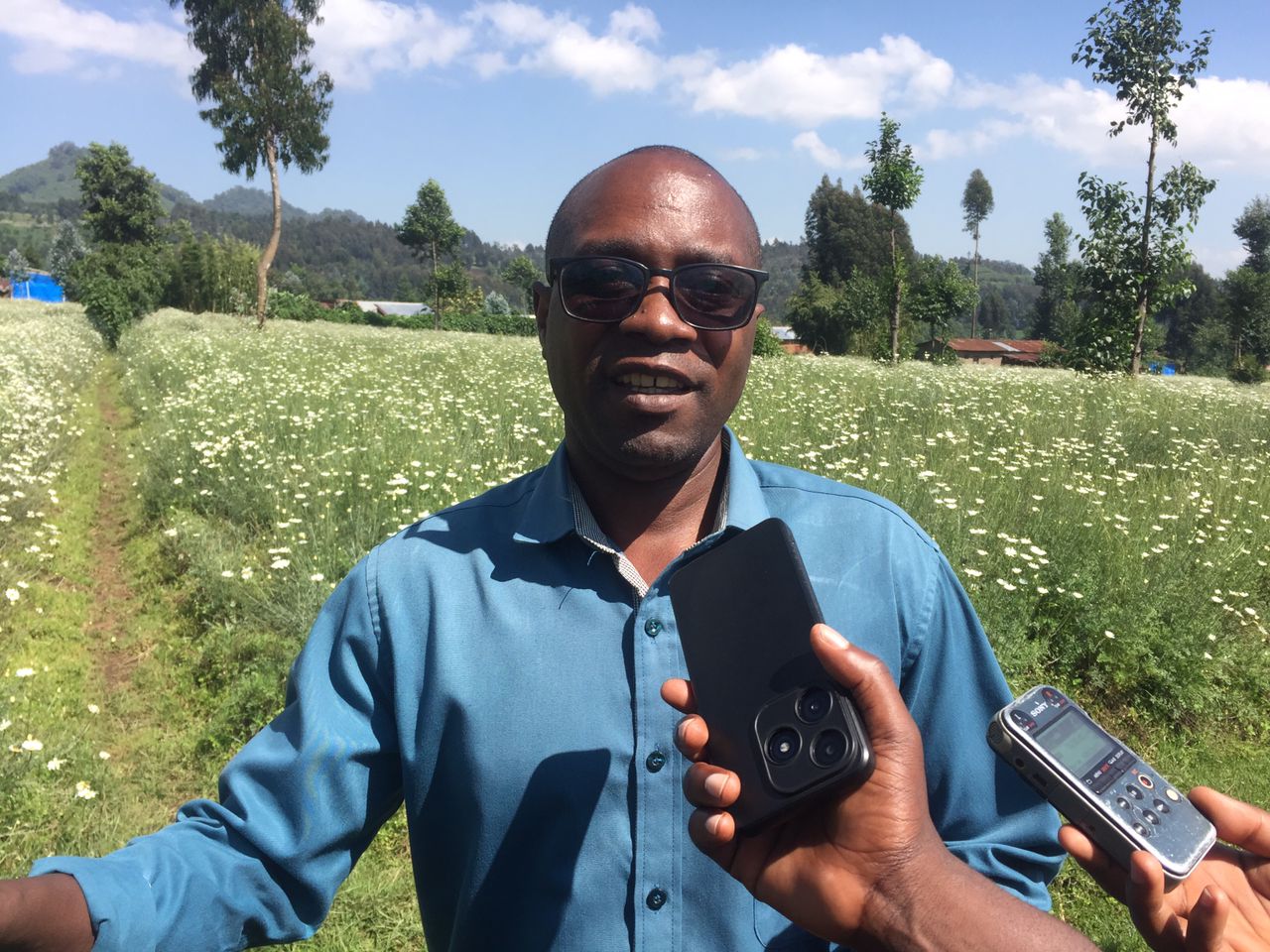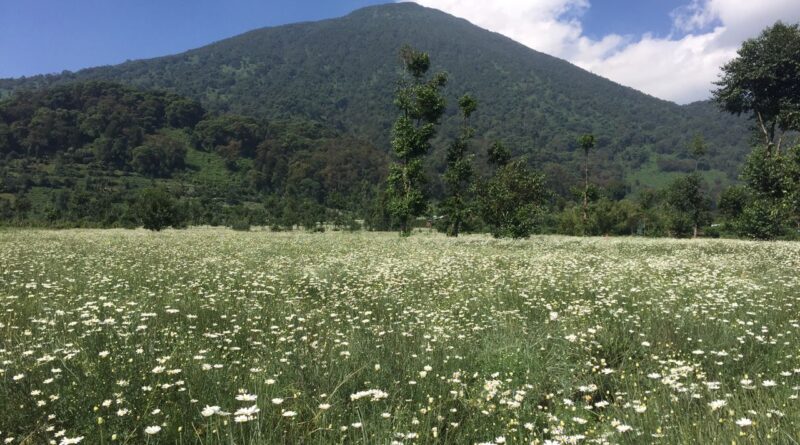The benefits of growing pyrethrum for farmers, soil, and Rwanda’s tourism
Pyrethrum is a widely grown crop in Northern Rwanda, particularly in Musanze District, in sectors overlooking the Virunga mountains such as Shingiro, Musanze, and Kinigi. It is recognized as a high-value cash crop that significantly benefits not only the farmers but also the land it is grown on.
Francois Shirakera, a resident of Shingiro Sector, is one of the pyrethrum farmers who highlights the crop’s immense value—from cultivation to its use as fertilizer for subsequent crops like potatoes.
“Pyrethrum is a cash crop, but it also revitalizes the soil’s natural fertility because it naturally eliminates pests. It’s an incredible crop as it doesn’t require synthetic fertilizers, although organic manure can be used to nourish the soil further,” he explains.
“After planting, it takes 3-4 months to start harvesting, and you can continue harvesting every two weeks for about a year before rotating it with other crops. Currently, a kilogram sells for RWF 1,200, and we deliver it to SOPIRWA,” he adds.
Shirakera also emphasizes its role in improving soil fertility:
“One major benefit to the soil is crop rotation. When pyrethrum is harvested, it leaves behind essential nutrients that kill harmful organisms, keeping the soil healthy. Additionally, the stalks can be chopped and spread across the field to decompose rapidly, transforming into rich organic fertilizer within three months.”
Economic and Developmental Impact on Musanze District
Musanze District has prioritized several sectors for economic growth, including agriculture, livestock farming, trade, investment, tourism, and environmental conservation. These priorities are part of the district’s annual performance goals for 2024-2025, with a special focus on increasing exports to earn more foreign exchange.
Francois Kazimbaya, Musanze’s Planning Officer, spoke to Greenafrica.rw about pyrethrum’s strategic role in the district’s economic advancement.
“We chose to prioritize pyrethrum cultivation and integrated it into our performance contracts. Instead of merely targeting acreage, we focused on production. This year, we aim to harvest 379 metric tons (MT) of dried pyrethrum flowers. For this quarter alone, we had set a target of 50 MT, but we have already surpassed 100 MT,” he shared.
One of the largest pyrethrum-growing sites is located in Kigasa, Kaguhu Cell, Kinigi Sector. The crop’s development is supported by SOPIRWA, a factory that processes pyrethrum into various pesticides, including those used to combat fall armyworms in maize fields.
Kazimbaya agrees with Shirakera’s insights, emphasizing that pyrethrum enriches the soil. He noted that yields from crops planted after pyrethrum, such as potatoes or beans, often double compared to typical harvests.
Pyrethrum and Agricultural Tourism
Kinigi, where much of this crop is grown, is located in the Buffer Zone of Volcanoes National Park, renowned for its gorilla tourism.
Kazimbaya explained:
“Just look at how beautiful the pyrethrum fields appear. Tourists visiting the gorillas in Volcanoes National Park can also explore these fields. By showcasing such initiatives, we can promote Rwanda’s agricultural efforts. These fields, along with potato plantations, add to the scenic beauty, contributing to agri-tourism. This diversification helps boost the district’s and the country’s global recognition.”
Last year, the district set a target of producing 120 MT of dried pyrethrum flowers. This year, the goal is significantly higher at 379 MT, reflecting the growing importance of this crop.


